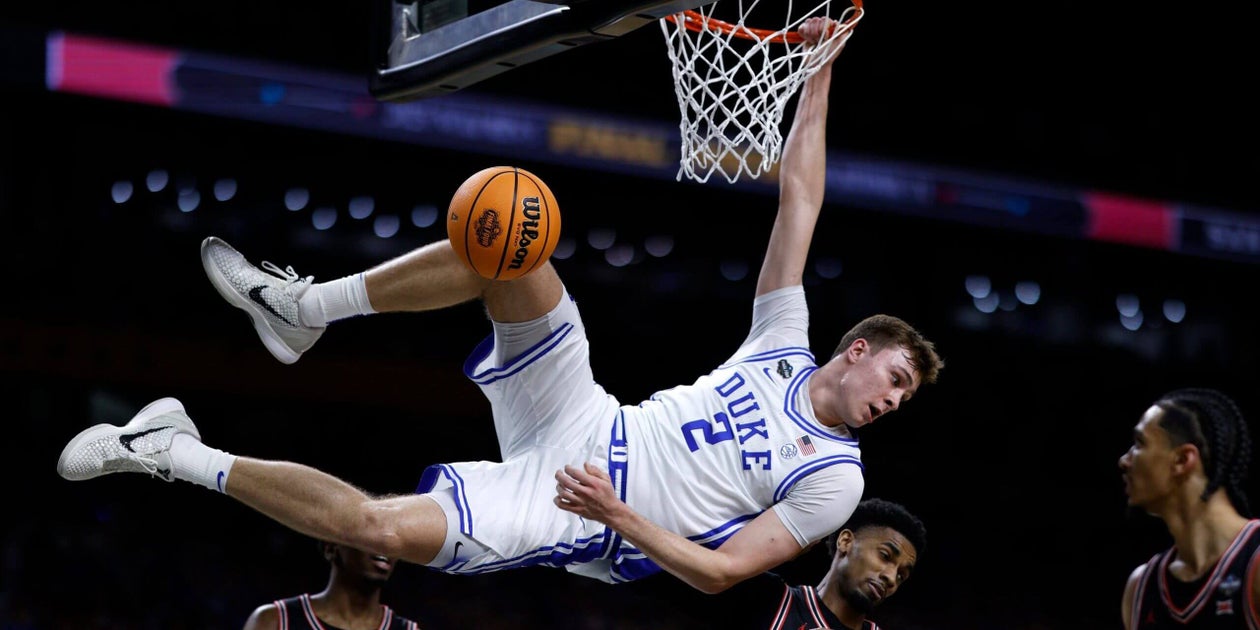

Monday will be one of the most important evenings in Washington Wizards history.
Does that sound a tad melodramatic? We don’t think so. Consider that so much of Washington’s on-court suffering during the 2024-25 season — the 18-64 record, the blowout losses and the late-season scratches of veteran players, in the team’s second year of a full-blown rebuild — stemmed from the goal of giving the franchise its best chance to win Monday night’s NBA Draft lottery in Chicago.
Advertisement
Mission accomplished on that front. The Wizards will enter the pingpong-ball drawing tied with the Utah Jazz and Charlotte Hornets for the best possible odds of winning the lottery, at 14.0 percent, and the right to select Cooper Flagg, the Duke one-and-done star pegged by almost all NBA people as the consensus No. 1 pick.
The Wizards, Jazz and Hornets also will have equal probabilities to receive the second pick (13.4 percent), the third pick (12.7 percent) or the fourth pick (12.0 percent). To put it another way, Washington, Utah and Charlotte each will have a 52.1 percent chance of taking home a top-four pick.
Because the Wizards finished with the league’s second-worst record, their worst possible scenario is to fall to the sixth draft slot.
Want to feel optimistic? Since the lottery odds were flattened in 2019 to reduce the incentive to tank, the team with the second-worst regular season record has won the top pick in three of six drafts. In 2021, the Pistons, at 20-52, won the lottery and took Cade Cunningham. In 2022, the 22-60 Orlando Magic captured the first pick and took Paolo Banchero. And in 2023, the 22-60 Spurs, who were tied with Houston for the second-worst regular season record, got a 14-5-8-2 ping-pong ball combo to get No. 1 — and Victor Wembanyama.
(Is this the time to mention the Wizards had the first three numbers in that four-ball sequence: 14, 5 and 8? And that they had six of the remaining 11 numbers in the hopper, any one of which would have given them Wemby? But none of them came up, and thus San Antonio got a third generational big man to build around, after David Robinson and Tim Duncan, in the last 35 years. No, it’s not the time?)
If the thought of barely losing out on Wembanyama is still too painful to contemplate, then you’ll see why we regard Monday night’s lottery as so important. Washington hasn’t gotten the top pick since 2010, when it drafted John Wall. Wall and Bradley Beal, taken third in the 2012 draft, led the Wizards to their most successful run in the forlorn recent history of the franchise.
Advertisement
The Athletic’s David Aldridge and Josh Robbins look at each of the six potential scenarios the Wizards will encounter during the drawing in Chicago, and where each scenario would leave them in the draft.
Scenario 1: And there was great rejoicing
Pick: First (odds: 14.0 percent)
Candidates: Flagg, Dylan Harper
David Aldridge: It’s a two-player top of the draft, with either one of the two outstanding freshmen this season leading the way: Duke’s Flagg, who won most of the national Player of the Year awards, or Rutgers’ Harper, who rose above his team’s mediocre season to solidify his status as a top-two player with a strong campaign: 19.4 points, 4.6 rebounds and 4.0 assists per game. It’s a closer choice than you might think.
Anybody paying attention knows how good the 6-foot-9 Flagg is, and how much potential he has both on and off the court to raise the floor and ceiling of a franchise. He took Duke to the Final Four despite just turning 18 last December. He wants all the smoke, and he doesn’t shrink from any competition. His “compete level” is off the charts. Yes, there will be defensive matchups in which he’ll struggle at the outset in the pros, but his effort and potential as a help-side shot blocker are NBA-ready. On offense, his shot got more consistent as the year went on at Duke, and his 38.5 percent on 3s is more than good enough to translate at the next level. He sells hope; he’ll sell tickets. He’s a franchise shifter. You have him on your team, you have a major foundational piece around whom to build.
But … Harper’s pretty good, too. He fits right into the profile of the modern NBA floor general: a one with size, like Shai Gilgeous-Alexander or Cunningham or Ja Morant or Tyrese Haliburton. Like all of the above, Harper, at 6-6, 215, gets wherever and whenever he wants on a court. He doesn’t have Morant’s hops, but he doesn’t get bumped off his spots. He attacks defenses with great energy and finishes well in traffic. The 3-point shot (33.3 percent) needs refining, but I can’t see that being a long-term problem. He’s a willing passer. The defense isn’t elite, but he showed plenty of chops at that end for the Scarlet Knights. And there’s no way that the son of Ron Harper is going to be anything but a professional in all ways, and a leader. If you want to take a potential superstar lead guard … Harper’s your guy.
Advertisement
Having said that, I can’t see Washington passing on Flagg if it wins the lottery. He’s got too much juice. The profile of the Wizards would be raised immediately; you’re on national TV 10 to 15 times, minimum, with him on your roster. (And that would be a pretty sweet quartet of young superstars in D.C.: Jayden Daniels, James Wood, Ryan Leonard and Flagg. No wonder everyone wants a new building or stadium around here!)
Josh Robbins: This, of course, is the hallelujah scenario.
David, as usual, is 100 percent correct in his assessment, and I would like to amplify something he said. The Wizards are irrelevant nationally right now, but drafting Flagg would immediately raise the franchise’s cachet everywhere, including within the D.C. market.
But if this hallelujah scenario comes true, I’m confident that team officials would not immediately say that Flagg would definitely be their guy at No. 1. Team officials almost certainly would say they intend to go through their normal draft process, which means that they would do everything in their power to fully evaluate Flagg and Harper. That would involve inviting Flagg and Harper to D.C. before the draft for thorough interviews and, if the players are willing to do so, for individual workouts.
To be clear: I still think Flagg would be the highly likely choice, but the front office would parse out everything. Harper would not imbue the Wizards with the same level of immediate buzz that Flagg would provide. But there’s an argument to be made that if Harper fulfills his potential, he might ultimately surpass Flagg as an NBA player. During the pre-draft evaluation process, the Wizards would be obligated to at least consider the possibility, however remote, that Harper could become the better long-term contributor on the court.
Pick: Second (odds: 13.4 percent)
Candidates: Harper, Ace Bailey, V.J. Edgecombe
Aldridge: I’m pretty sure Washington would be just fine with the second pick for the second year in a row. Bailey has his backers, but I’d be shocked if the Wizards didn’t go for Harper, for the reasons cited above. And, sure, that would leave the Wizards with a decision to make about what to do with Jordan Poole. He was unlocked by Brian Keefe when he was put on the ball, starting with the second half of the 2023-24 season. And Poole was really good this season, at 20.5 points on 38 percent shooting from deep, while making good decisions with the ball and continuing to be a good teammate. But Harper’s got too much star potential to pass up. You take him now and figure out the minutes and rotations later.
Advertisement
Robbins: The Wizards would love, love, love this scenario, too. The team still could wind up with a franchise-changing talent who also, importantly, wouldn’t have quite the same level of expectations that come with being the No. 1 pick.
Scenario 3: Not optimal, but not catastrophic
Pick: Third (odds: 12.7 percent)
Candidates: Bailey, Edgecombe, Tre Johnson
Aldridge: All due respect, but there’s a significant dropoff — at least, most NBA types think so — after Flagg and Harper. (A lot will depend on what Bailey measures at Chicago. Is he 6-10, as he was listed at Rutgers, or is he more like 6-8 1/2 or 6-9?)
I might be wrong on this, but knowing what Will Dawkins and Michael Winger value most in players — including the ability to guard multiple positions, and high basketball IQ — I think they might go for Edgecombe if they’re picking here, even though, at 6-3, he doesn’t have the positional size Washington’s brain trust favors. He has freakish athletic ability, though; just wait until his anthropomorphic measurements come out. He’s skinny at 180 pounds, but he makes up for it with busy hands and feet, which produced copious amounts of steals and blocked shots at his position. At that end of the court, he’ll be a worthy heir to other recent defense-first Baylor men who’ve found their place in the NBA, such as Miami’s Davion Mitchell and San Antonio’s Jeremy Sochan.
Edgecombe got off to a rough start offensively at Baylor, improved a little in the middle of the season, but dropped off considerably the last two months, especially from deep (17 of 63 on 3s in 14 games in February and March). That part of his game is a work in progress. In the open court, though, he can do damage. He’ll struggle at first to defend in the NBA without fouling, as almost all rookies do. But eventually, he could provide the Wizards with a real defensive profile as an undersized two who would fit in next to Bub Carrington, Kyshawn George and Alex Sarr. Avery Bradley, with similar measurables to Edgecombe’s, didn’t do too badly in that space over 12 NBA seasons.
Robbins: Now we’re getting into letdown territory, which shows how cruel the lottery can be.
As DA noted, if the conventional wisdom is correct, the space between this year’s projected second and third picks is where league insiders start to see a widening gulf. That said, I think Wizards officials are intrigued by Bailey’s ability on offense. As the playoffs prove every year, a team needs players who can make difficult shots, and Bailey appears to be such a player, though he’ll face taller, more athletic defenders in the NBA. True, Dawkins and Winger value defense. Defense is a major question with Bailey. How much effort will he put in there? If team officials determine he can be “coached up” on defense, then he would be in play here at No. 3.
Advertisement
Scenario 4: F Street, we have a problem
Pick: Four (odds: 12.0 percent)
Candidates: Bailey, Edgecombe, Johnson
Aldridge: Wizards hearts would start to sink if Washington doesn’t get a top-three pick after slogging through this last brutal season. That doesn’t mean there isn’t talent available at four, but the players who will likely be there would be more of the complementary type than the franchise-level guys at one or two. If Bailey is still there, Washington would have to seriously consider him. He’s a three-level scorer who excels at tough shot-making. But that’s the problem; he often finds himself needing to make tough shots. At the next level, that can be difficult. And, he showed next to no proclivity to pass.
But, as our Sam Vecenie noted in his latest mock draft, Rutgers was much, much better when Bailey was on the floor than when he was off. Johnson has the size at 6-6 to play two guard effectively in the NBA, and his scoring profile in a very tough conference as a freshman suggests he could transfer those skills to the pros. Could the Wiz, who ranked 30th in the league in offensive rating, use someone who shot 38 percent on off-the-dribble 3s and 41 percent on catch-and-shoot 3s last season? Why, yes, they could.
Robbins: As I indicated with the third-pick scenario, I think that was where the Wizards’ hearts would start to sink: not being in the top two. I’m not certain there’s as large a gap between No. 3 and No. 4 as there is between No. 2 and No. 3.
Let me also use this space to rant for a second. In the NBA Draft, I would not be so concerned about positional crossover at this still-early stage in the Wizards’ team-building process. Realizable long-term upside (which includes a player’s character) is what team officials should be concerned about most. If the best-available player on the Wizards’ board projects more highly than the second-best-available player, then the team should select the person with the higher upside even if he plays the same position as others on the roster.
If Washington drafts third or later, I would not be opposed to Keefe using unconventional lineups in 2025-26, even if those lineups would make the team less competitive in the short run. After all, if Washington drafts third or fourth, the franchise should still be looking to bottom out to maximize its chances in the 2026 lottery.
Scenario 5: Gulp!
Pick: Five (odds: 27.8 percent)
Candidates: Johnson, Kon Knueppel, Kasparas Jakučionis
Advertisement
Aldridge: The Wizards insist that there are six players they love that they’d be happy to take in this draft. I’m in the Ron Burgundy camp on that one. Five or six would be a colossal disappointment for Washington after taking all those Ls this season. Johnson would be good value if he’s still on the board here, but if not … geesh. Knueppel and Jakučionis can both pass and have potential, but neither player is in the same space as the top prospects. At five or six, the Wizards might have to start thinking about packaging a player, their higher first-round pick and/or the 18th pick they got from Memphis in the Marcus Smart trade to try and move up, or to acquire a young vet who fits their timeline and who could help immediately next season.
Robbins: I don’t think the gulf between the No. 4 and No. 5 picks is as cavernous as the abyss between No. 5 and No. 6. It depends on how the front office views the least impressive among Bailey, Edgecombe and Johnson.
I’m all for trying to trade up. Where I diverge from DA is the value of trying to get immediate help for the 2025-26 season. Forget that! If the Wizards draft fifth or sixth this year, they’re not going to acquire the star they so desperately need from this draft (and I’m also skeptical about the star potential of the guys available after Flagg and Harper go off the board).
I know the possibility of tanking away the upcoming season will demoralize many fans. But the 2026 draft will be deeper at the top than this year’s. If Washington doesn’t land a future star this year, it cannot afford to punt on next year’s draft and cannot take the risk of losing its 2026 top-eight protected pick.
Heck, as distasteful as it may sound, I would think the Wizards would have to consider dealing away one of the few veteran players they have now. I think Khris Middleton and Marcus Smart were tremendous helps to the team on and off the court after they arrived at the trade deadline. But in the event of missing out on a star this year, the Wizards’ own 2026 first-round pick would become even more important.
That said, if Washington lands the first or second pick this year, then, in my opinion, it would be even more important to have Middleton and Smart around for 2025-26, at least up to the trade deadline. Their presence would raise the Wizards’ “compete level,” and because of that, Middleton and Smart would ensure that Flagg or Harper would begin their NBA careers in an ideal environment.
Scenario 6: Remove all sharp objects
Pick: Six (odds: 20.0 percent)
Candidates: Knueppel, Jakučionis, Derik Queen, Carter Bryant
Advertisement
Aldridge: Now you’re in Jerry-West-at-the-2003-lottery territory. If the Wizards fall to six this year, they’d almost have to win the ’26 lottery, with uber-talent and BYU-bound forward A.J. Dybantsa at the top of every team’s wish list, to make up for it. And you don’t want to be in the position of having to win a lottery. Maryland’s Queen has rocketed up draft boards after his terrific freshman season in College Park, but can he do enough defensively not to get played off the floor? Bryant, who only played a little more than 19 minutes per game at Arizona, would be a flier this high, especially considering the Wizards already have Bilal Coulibaly and George on the roster. But Bryant has major 3-and-D potential, and you can never have enough multiple switchable wings.
Robbins: If the Wizards draft sixth, I don’t think they’d have to win the ’26 lottery. But drafting sixth probably would be difficult to stomach. This is the risk of bottoming out, and of finishing a season with the second-worst record instead of the worst record.
(Photo of Cooper Flagg: Lance King / Getty Images)
This news was originally published on this post .





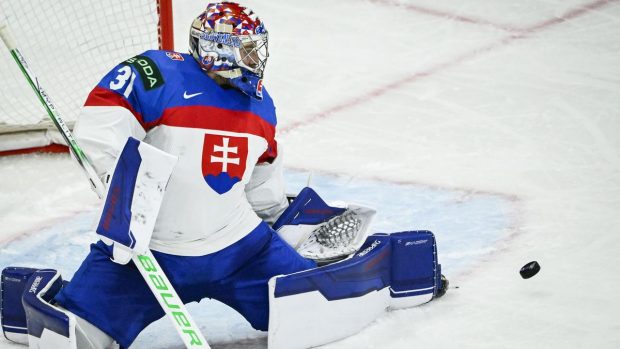
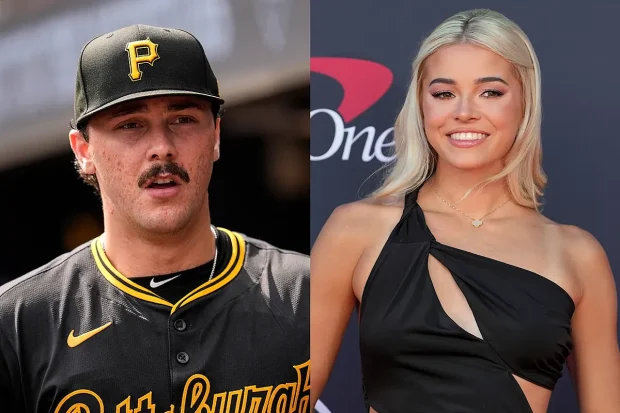
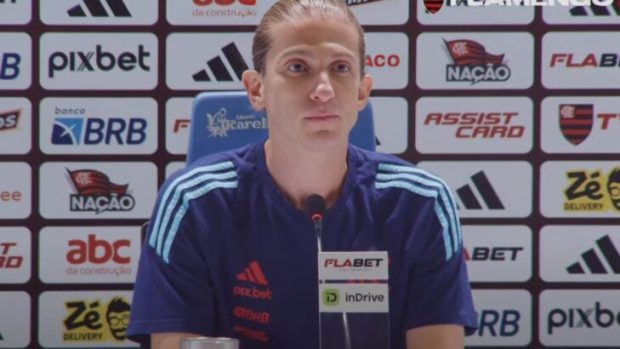
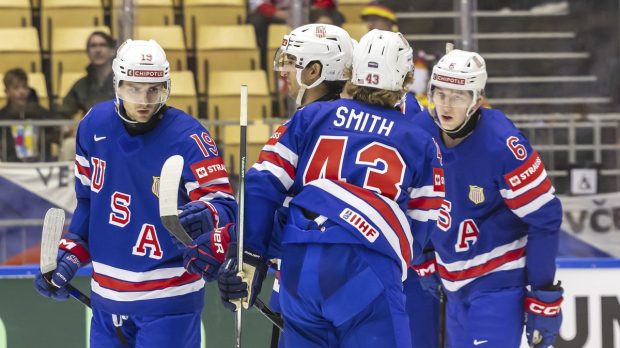
Be the first to leave a comment